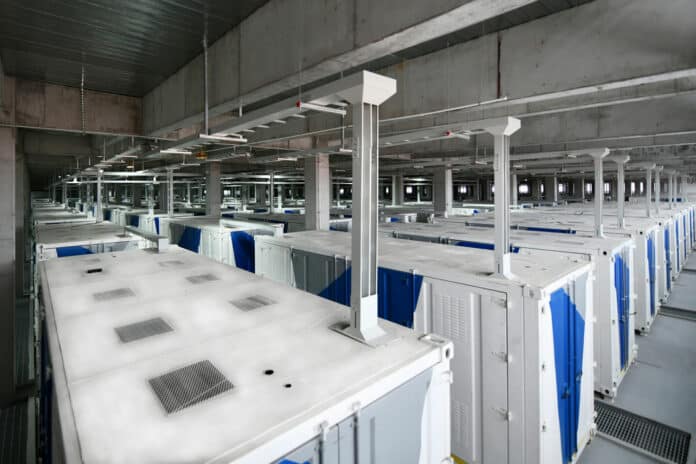The 100 MW Dalian Flow Battery Energy Storage Peak-shaving Power Station, with the largest power and capacity in the world so far, was connected to the grid in Dalian, China. It will be put into operation in mid-October and will eventually be scaled up to 200 MW.
The vanadium redox flow battery technology was developed by a division of the Chinese Academy of Sciences. This storage project is supported technically by Prof. LI Xianfeng’s group from the Dalian Institute of Chemical Physics (DICP) of the Chinese Academy of Sciences. The Dalian Flow Battery Energy Storage Peak-shaving Power Station was approved by the Chinese National Energy Administration in 2016.
The first phase of the on-grid power station project is 100 MW/400 MWh. Based on China’s average daily life electricity consumption of 2 kWh per capita, the power station can meet the daily electricity demand of 200,000 residents, thus reducing the pressure on the power supply during peak periods and improving power supply reliability in the southern region of Dalian.
As the first national, large-scale chemical energy storage demonstration project approved, it will eventually produce 200 MW/800 MWh of electricity.
The energy storage technology can help power systems achieve the strain and response capability needed after large-scale access to the power grid. It is also particularly important in facilitating the use of renewable energy. The Dalian Flow Battery Energy Storage Peak-shaving Power Station is based on vanadium flow battery energy storage technology developed by DICP. It will serve as the city’s power bank and play the role of peak cutting and valley filling across the power system, thus helping Dalian make use of renewable energy, such as wind and solar energy.
The station’s energy storage technology uses vanadium ions of various valence states. Electrical energy and chemical energy are converted back and forth through redox reactions of these ions in the positive and negative electrolytes, thus realizing large-scale storage and the release of electrical energy.
This technology is promising in large-scale energy storage applications because of its excellent safety, good reliability, large output power and storage capacity, long life, good cost performance, use of recyclable electrolytes, and environmental friendliness. This technology can also work with conventional thermal power, nuclear power, and other power sources.
The station will improve the renewable energy grid connection ratio, balance the stability of the power grid, and improve the reliability of the power grid, thus serving as a model for electricity peak-shaving and renewable energy grid management in China.
